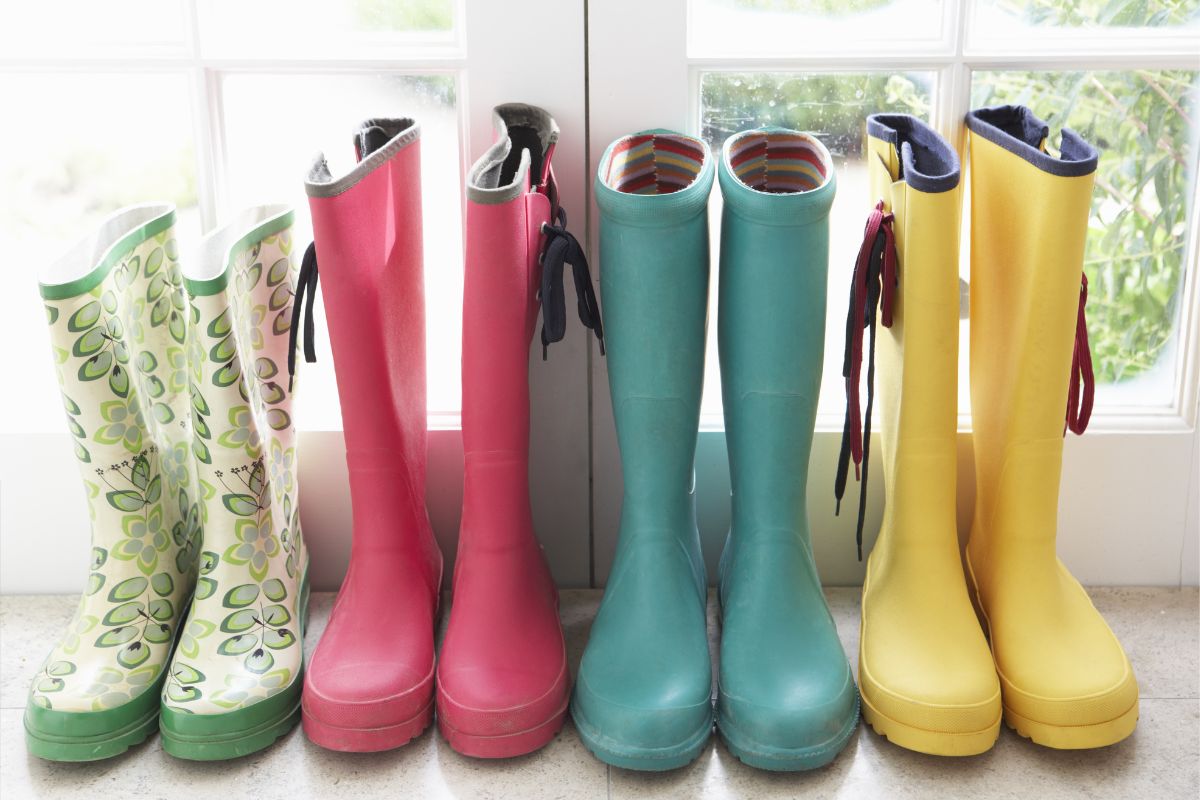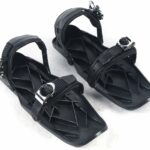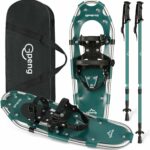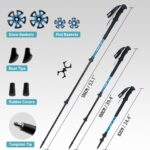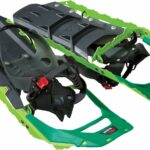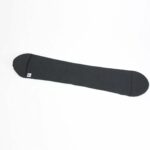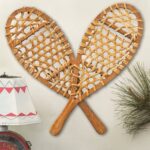If you love hiking, you know the importance of getting the right clothing for your excursions, especially when it comes to what you put on your feet.
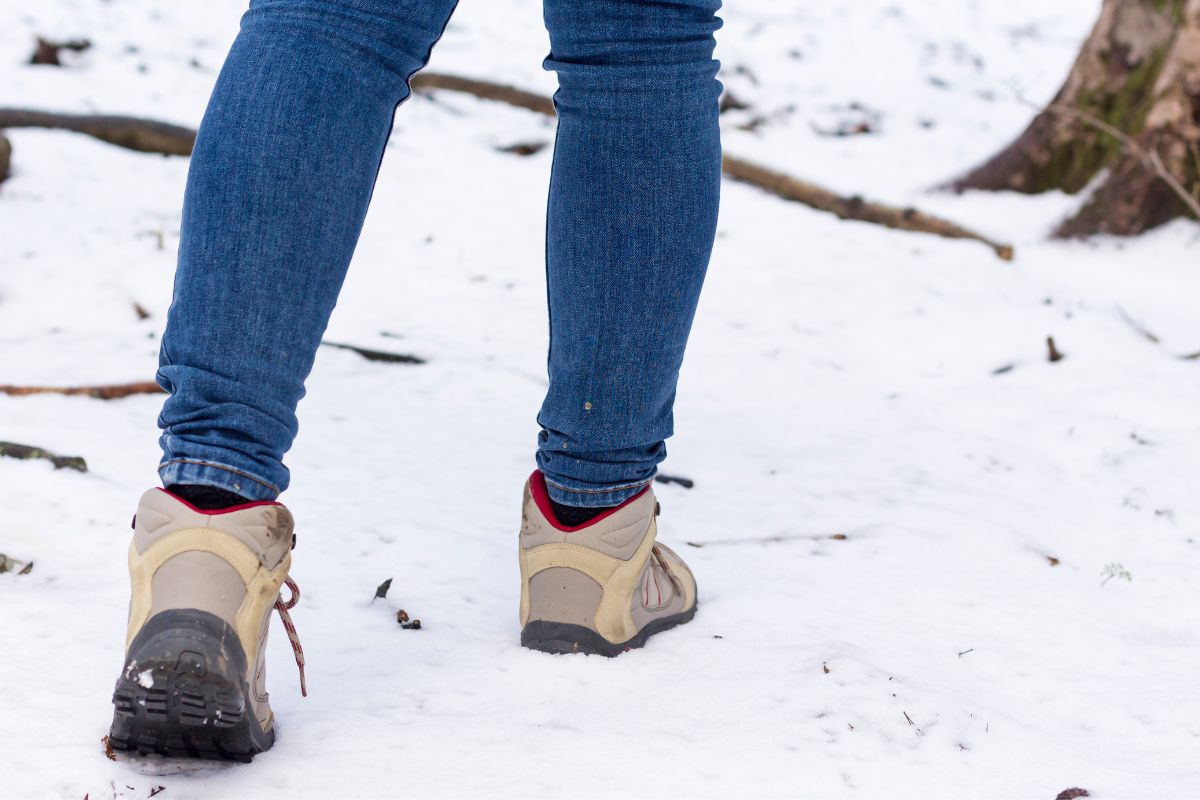
Before you part with your hard-earned money, it’s important to ensure that the hiking boots you purchase can be worn throughout the year, and that they can withstand rain, slush, and even snow.
However, a lot of hikers wonder if they need to buy a whole new pair of hiking boots just for winter adventures, and if their normal hiking boots will be able to meet the demands of snow terrain.
The short answer is, yes, hiking boots are good for snow (see also “Are Rain Boots Good For Snow?“), if they tick off a few boxes. Namely, good hiking boots for snow should be insulated, waterproof, and have an appropriate rubber sole.
With the right care and useful accessories, your winter hiking boots can see you through all types of trails, even if they’re covered in snow!
Below, we’ll assess if your boots are good for snow, and things to keep in mind when hiking in snow. Let’s get into it!
How Do You Know If Your Hiking Boots Are Good For Snow?
There are three main factors that determine where your winter hiking boots are suitable for hiking in snow. These are sturdiness, insulation, and waterproofing. Let’s take a look at these three factors in closer detail.
Sturdiness
Snow can make a dramatic difference to usually dry conditions, and when hiking in snow your boots need to be stiffer and heavier.
Your hiking boots should have important features such as a secure fit on your ankles, and a high ankle collar to prevent snow from getting into your winter boot.
Winter hiking boots also have soles that have higher thickness traction to reduce slippage.
Insulation
If you have decent blood circulation or are very sensitive to the cold, it’s important to ensure your hiking boots are well-insulated.
Insulation can be built-in or removable, and can range from 200-g to 800-g insulation that is made from natural or synthetic materials.
Waterproofing
When you’re hiking in winter, having wet feet is dangerous as the cold weather can cause them to freeze.
Nobody wants to fall victim to frostbite! But if you’re wearing a pair of improper hiking boots, then you are more susceptible to frostbite.
While standard hiking boots might be water-repellant, but winter hiking boots must be waterproof. They need to keep water out completely while remaining breathable.
The three common characteristics of winter hiking boots are:
- Reinforced toe caps: These provide extra protection against snowy terrain and the harsh elements. Some boots often come with snow-friendly accessories you can add to the boots such as crampons or micro-spikes.
- Gusseted tongues: These ensure that no snow or water leaks into the underside of the laces.
- Removable liners: These are preferable to built-in insulation if your boots get wet. Removers liners can be dried completely so you don’t have to deal with damp boots the following day.
It’s worth noting that winter hiking boots tend to be heavier than normal hiking boots due to the winterized and insulated soles. However, winter hiking boots are still lighter than steel-capped boots.
How To Wear Hiking Boots In The Snow
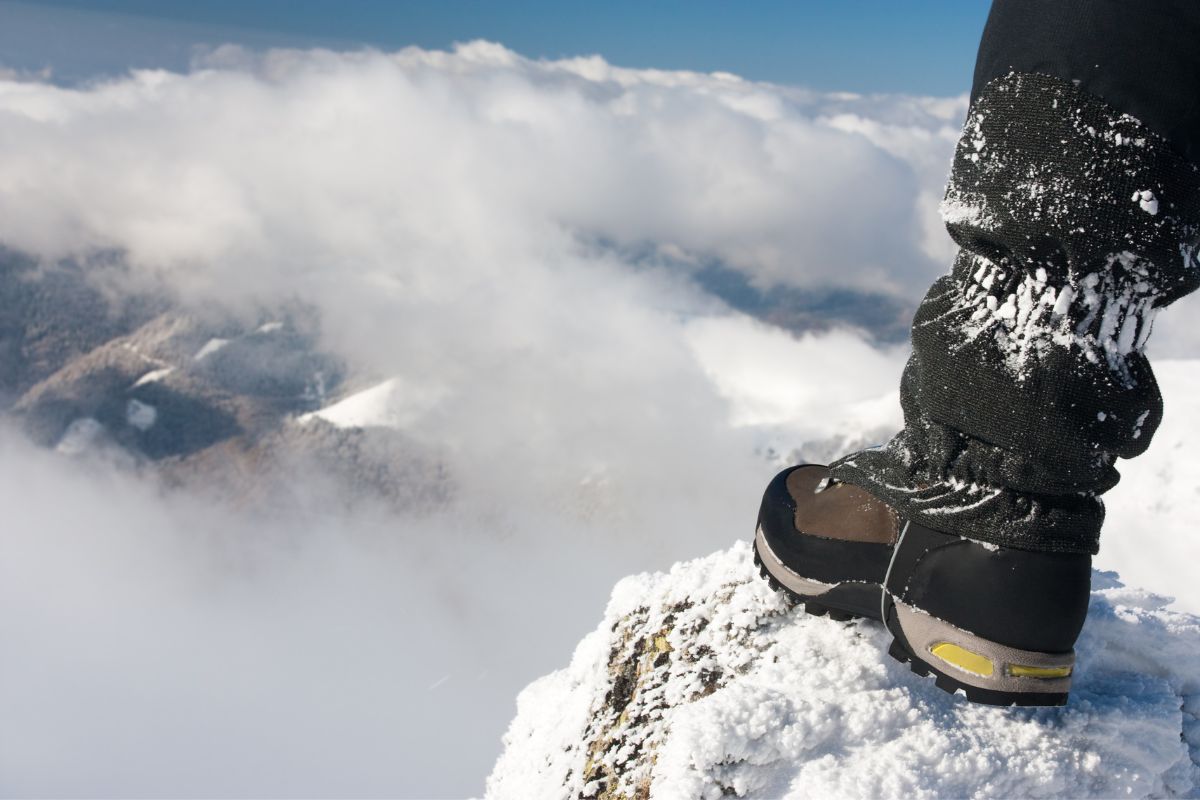
There are certainly ways to make your winter hiking boots more comfortable to wear in the snow (see also “What To Wear Under Snow Pants“). Below we’ll take a look at some accessories you can add and tips you can implement to keep your feet dry and warm.
Wearing The Right Socks
When we say ‘the right socks’ we mean thick, woolen socks that keep in heat and are moisture-wicking.
We recommend packing a pair of spare wool socks for longer hikes just in case the socks you’re wearing get wet, either from the snow, sweat, or anything else.
Use Additional Accessories
It is often worth adding extra accessories to your winter hiking boots to make them more effective in snow.
- Crampons: These are important gear when hiking in extreme weather to help you keep footholds on frosty or icy surfaces. It’s crucial you ensure your boots are able to have crampons attached to them.
- Gaiters: Gaiters range from ankle to knee-length, gaiters are great year around for keeping out mud, bugs, and snow, and all manner of unpleasant things!
- Micro-spikes: Micro-spikes can be used on even terrain as well as snow, but are mainly used for traction on icy surfaces and packed-down snow. They can be attached easily and are compatible with most winter hiking boots.
- Snowshoes: These shoes are most effective in fresh, deep snow, allowing you to walk more easily through snow so you don’t sink in and get your boots wet.
Make Your Hiking Boots Waterproof
Synthetic boots are prone to absorbing water, so even in pretty light snow it’s worth treating your boots with a waterproof coat.
Think of it like waterproofing a tent. Just like when you waterproof a tent you need to apply DWR (Durable Water Repellent) voting to your boots. Not only does this keep your boots dry, but protects the material too.
But how do you make your hiking boots waterproof?
Before you waterproof your boots, you need to keep in mind that different materials will require different waterproofing methods, but below is the standard process for waterproofing your boots:
- Check your boots: Start by checking the material of your boots. Common materials for winter hiking boots are full-grain leather, Gore-tex, nubuck leather, or synthetic materials. You should also check if your boots need immediate waterproofing, or if they already have a protective base layer, as some boots may just need a light spray while other boots may need waxing.
- Clean off dirt or mud: First, remove the laces before you wash your boots with gentle detergent and a brush. You can also soak your boots if needed.
- Dry your boots: Rinse off your boots with water and dry with a towel before applying waterproofing.
We must stress that this is the standard process, and you may need to take a slightly different approach with different materials.
Make sure you do your research so you can apply the most appropriate waterproofing treatment for your boots.
Final Thoughts
We hope our article has told you all you need to about hiking boots and how to make them appropriate for snow.
Whether you should wear hiking boots or winter hiking boots when hiking in snow will all depend on the weather you’re experiencing.
- How to Choose a Skim Board - September 10, 2023
- is Skim Boarding Hard? - February 8, 2023
- How To Wax a skim board - February 8, 2023

